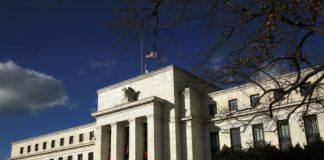One of the enduring mysteries of Australian politics is the dominance of the ALP in Victoria. In spite of a long list of failures – from the Red Shirts Scandal to the country’s largest debt to the hotel quarantine fiasco – Labor have held power in the Garden State for all but four of the last 23 years. A viable Liberal opposition is nowhere to be seen.
This is a trend that looks set to continue, come this Saturday. Even though the race is now tightening, with polls showing the Liberals neck-and-neck with Labor, discontent with the ALP and state Premier Dan Andrews has not translated into an overwhelming endorsement of the right, but rather in a more tepid shift to the Liberals occurring alongside support for the Greens and the novel growth of the “Teal independents”.
Like May’s federal election, malaise with one of the majors has not shifted in a Manichean fashion. Almost one in three Victorians is now opting for a third party in what will be a record for the state and yet another sign of deep discontent with Westminster government.
Liberal leader Matt Guy — the man who led the party to its 2018 defeat – remains unpopular and trails Andrews 48 percent to 34 percent as preferred leader. Andrews is not worried; he is focussing on his left-wing supporters as he tweets about LGBT rights and free tampons.
Indeed, the floundering fortunes of the Liberals are evident in their own actions. It is reduced to once-unimaginable tactics like preferencing the Greens over the ALP. The best the Liberals can hope for is a hung parliament. With the Coalition holding just 27 seats, “winning government is likely beyond its reach” according to Monash academic Paul Strangio.
Why, O Why? Why, despite the egregious failings of the ALP and of broader left-liberalism, is Victoria now a one-party, ALP-led, uber-liberal state? The ALP cannot be dislodged.
What’s wrong with the right? Like their federal and state counterparts, the Victorian Liberals are incapable of responding to the vast demographic and cultural changes that have taken place – with Victoria now one of the most liberal and “culturally diverse societies in the world”.
And in such a place, the technocratic “tax-cut Reaganism” that has come to define the right is unappealing.
This is something that Daniel Andrews, despite his many faults, understands. For when Andrews waxes lyrical about Victoria being “the most progressive state” or when he – a married Catholic man with three children – spruiks his LGBT bona fides, it’s easy to dismiss them as cynical gestures.
Yet they appeal to vast swathes of Victoria’s left-leaning electorate and are more persuasive than the Liberals’ law-and-order remarks on, say, African crime.
It’s not that the right is wrong – it’s not — it’s just that its views run completely counter to the liberal Zeitgeist. Indeed, the state of the right recalls the fate of French monarchists in 1789 or Puritans at Woodstock: well-intentioned and doomed.
In desperation, the byword of the Liberals is moderation — tempering their rhetoric; purging their party of traditional conservatives like Bernie Finn; and adopting strategies more amenable to the new Victorian electorate.
If they can’t beat the Left, they’ll have to join them. Lately, even when conservative parties have been in power, they’ve overwhelmingly followed a progressive agenda – like the Liberal Party’s 2017 institution of gay marriage.
This is a trend confirmed by Guy’s milquetoast performance in this week’s debate, his distancing from one of the party’s few real conservatives, candidate Timothy Dragan, and by his desire to be seen as anything but a right: “My message to you is very clear: we are safe, we are sensible, we’re centrist and mainstream.”
This is a tragic shift. The “facts of life are conservative”, as Margaret Thatcher famously remarked. The dystopia which is California is an example of what unrestrained progressive policies lead to.
Yet the right has lost. It has failed to master the new multicultural politics. Technocratic fixes prove fruitless when faced with the “Strong Gods” of family, tribe and culture. The right has forgotten David Hume’s observation that “reason is but a slave of the passions” and Pascal’s refrain that “the heart has its reasons that reason does not know”.
This has long been predicted. American writers John Judis and Ruy Teixeira wrote back in 2004 that the emergence of a new wave of demographically-diverse Americans was one which would ensure a “permanent Democratic majority”.
Well, that wave is now here and it’s acting as intended. As the writer Ronald Brownstein has noted, this demographically-diverse movement is that of the “coalition of the ascendant”, one imbued with what fellow writer Wesley Yang has dubbed the “Successor Ideology” – and which is “not going anywhere” either, as NS Lyons has observed.
Trends that originate in the US arrive in Australia a short time later. As The Age’s Annika Smethurst notes, Victoria’s “shifting demographics…remain the biggest threat to the Liberal Party’s long-term viability.” As the more conservative Baby Boomers and their elders declined from 56 percent to 38 percent of the electorate over the last decade, the more diverse Millennials grew from 18 percent to 38 percent.
And the Millennials are far from enamoured with the right. Indeed, as one Liberal insider bluntly put it: “they hate us”.
Which bring us back to this Saturday’s Victorian election. As although there is undoubtedly a deep resentment directed at Dan Andrews and the ALP, the underlying demographic and cultural trends show that the Liberals are unlikely to be the main beneficiary.
Instead, the most likely outcome appears to be a returned ALP with a reduced majority or some form of Labor-Greens / Labor-Greens-Teal alliance, i.e. an utter disaster. Yet it will be one which is, unfortunately, a direct result of Victoria’s culture and demography.








